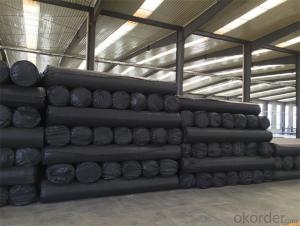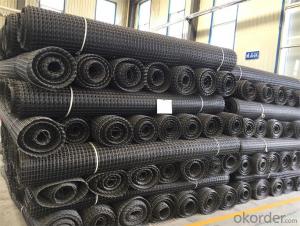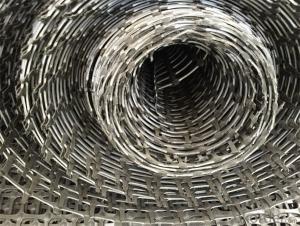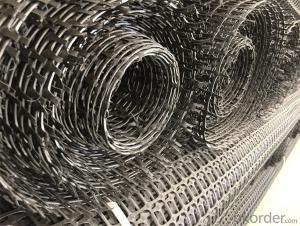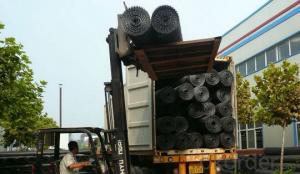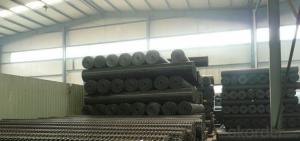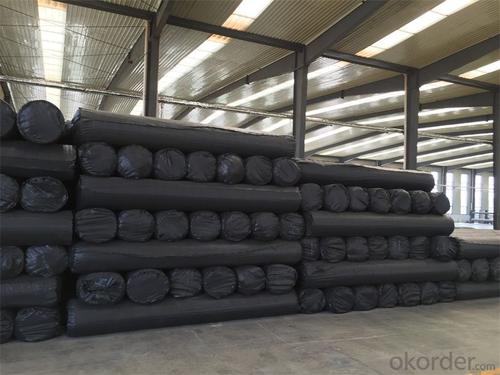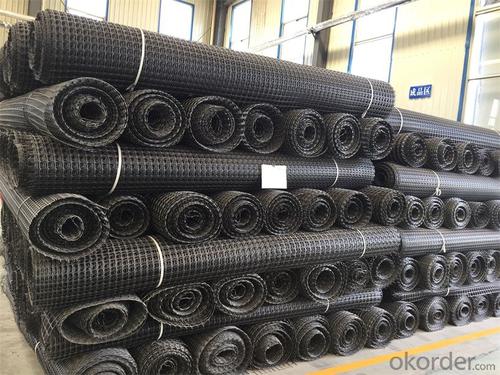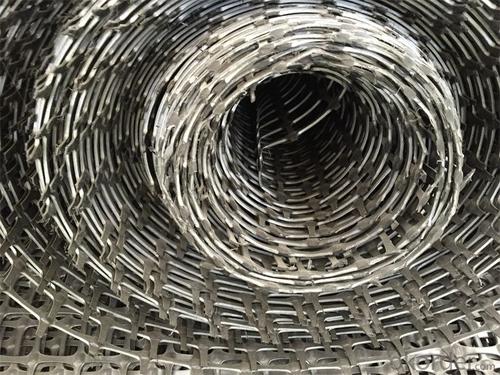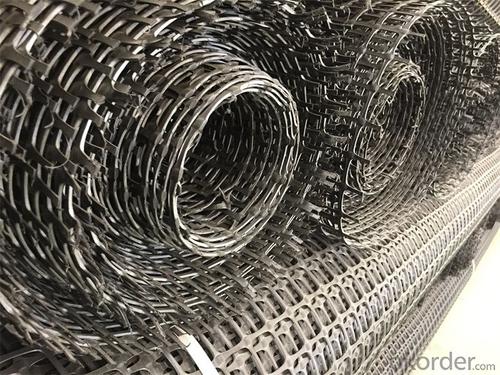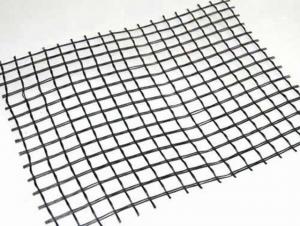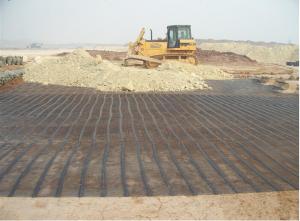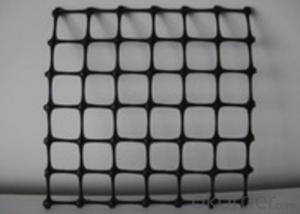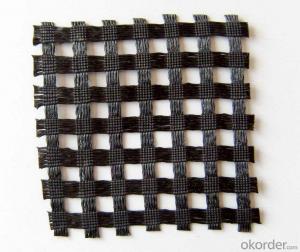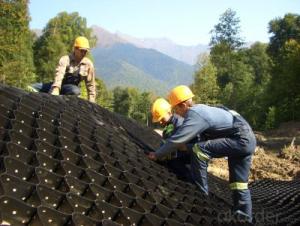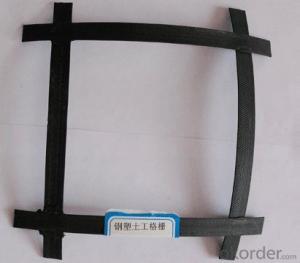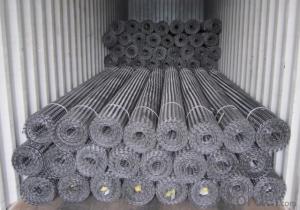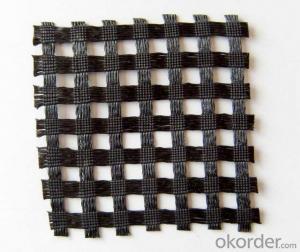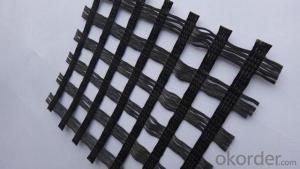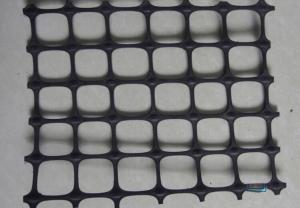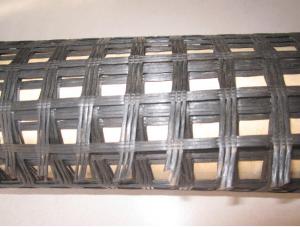Rail Track Reinforcement Geogrids - Biaxial Water-Soluble PVC Coated Polyester Geogrid 40*40KN PP Biaxial Plastic Geogrid
- Loading Port:
- Qingdao
- Payment Terms:
- TT OR LC
- Min Order Qty:
- 5000 m²
- Supply Capability:
- 2000000 m²/month
OKorder Service Pledge
OKorder Financial Service
You Might Also Like
Specifications of Geogrid:
40*40 KN PP Biaxial Geogrid
Subgrades reinforcement
The BX geogrids can effectively spread the loads to larger layers and so leads to a reduction of construction thickness and an extented pavement life---3 times longer than before. In addition, the BX geogrids provide a proven and practical solution to improving the brearing capacity of reciprocating loads while lowering the harms on the pavement. According to the test data, the reinforced subgrade with BX geogrids can have as more than 3 times bearing capacity concerning reciprocating loads as it had without reinforcement.
Specifications of biaxial(BX) geogrid | ||||||
properties | unit | TGSG | TGSG | TGSG | TGSG | TGSG |
unit weight | g/m2 | 300±30 | 330±30 | 400±40 | 500±50 | |
roll width | m | 4.00±0.20 | ||||
Tensile strength(MD) ≥ | KN/m | 15 | 20 | 30 | 40 | 45 |
Tensile strength(CD) ≥ | KN/m | 15 | 20 | 30 | 40 | 45 |
Elongation(MD) ≤ | % | 13 | 13 | 13 | 13 | 13 |
Elongation(CD) ≤ | % | 16 | 16 | 16 | 16 | 16 |
tensile strength @2% elongation(MD) ≥ | KN/m | 5 | 8 | 11 | 13 | 16 |
tensile strength @2% elongation(CD) ≥ | KN/m | 7 | 10 | 13 | 15 | 20 |
tensile stength @5% elongation(MD) ≥ | KN/m | 8 | 10 | 15 | 16 | 25 |
tensile stength @5% elongation (CD) ≥ | KN/m | 10 | 13 | 15 | 20 | 22 |
Applications of Geogrid:
Make reinforce treatment for various kinds of soft soil foundation to evenly distribute load stress and reduce uneven settlement, not easy to generate static electricity, and flammability property good in the coal mine. It is easy to wash coal.
Property of Geogrid:
1.) Improve roadbed bearing capacity,enlarge road lifetime.
2.) Prevent road collapse and crack
3.) Prevent soil and water loss in slope
4.) Could replace steel-plastic geogrid in coal mine.
Packaging & Delivery
| Packaging Details: | as customers' requirement.. |
| Delivery Detail: | 30days |
FAQ:
1. How to order your geogrid ?
a). Tensile strength in warp & weft direction
b). Grid size
c). Width and length
d). Quantity
2. Payment term .
a) TT
b) LC AT SIGHT
c) cash
d) 30% contact value as deposit ,the blance 70% be paid after received the copy of bl .
3. Delivery time
a) 19-25 days after received your depsit .
4. What is MQQ ?
a) 2500 m2 as MQQ , we can also produce sample for you .
Geogrid Show:
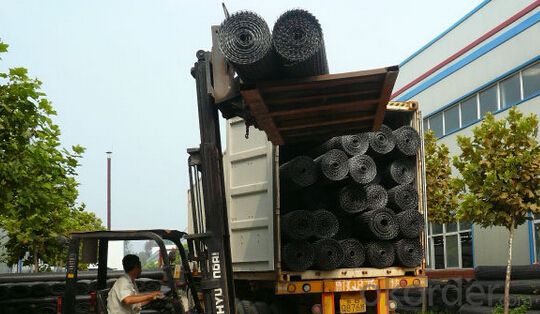
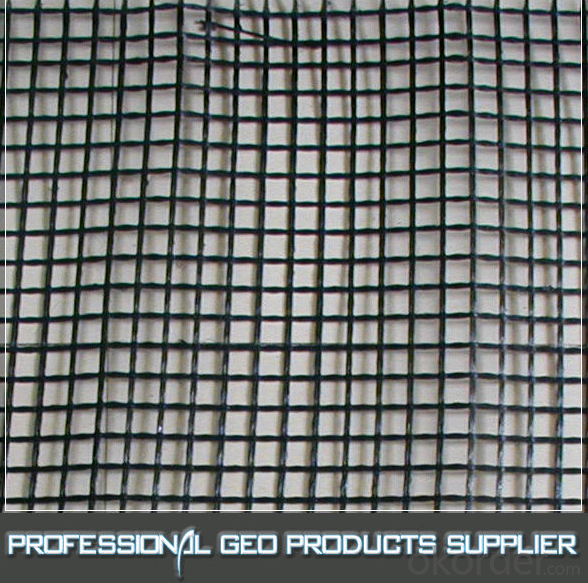
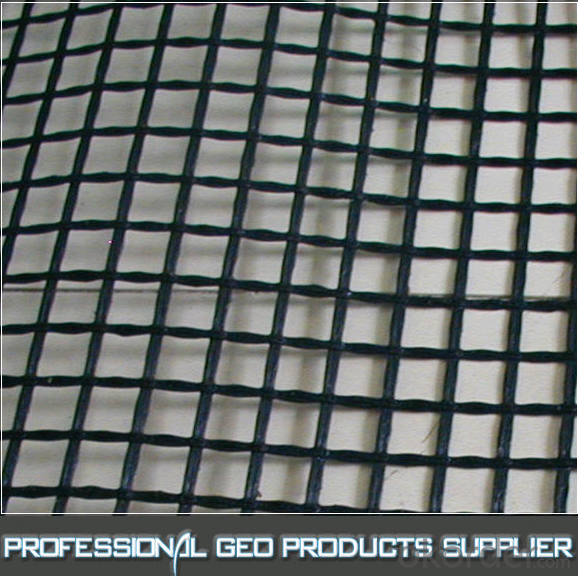
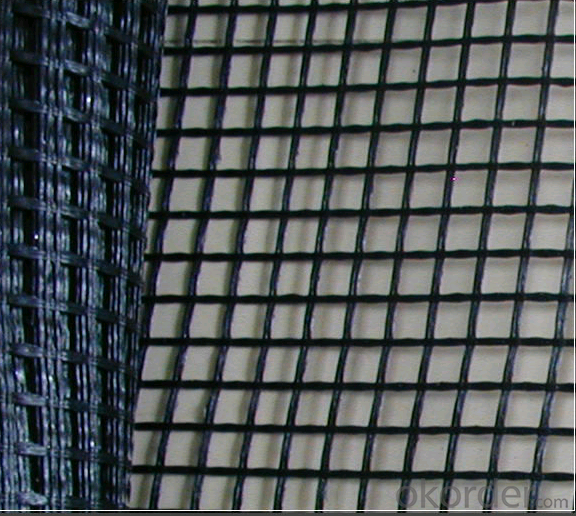
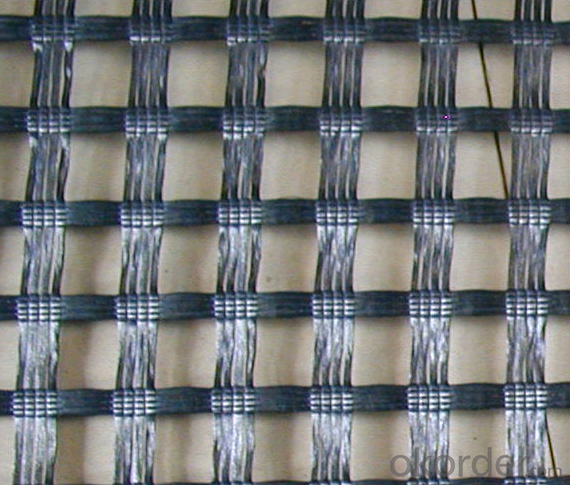
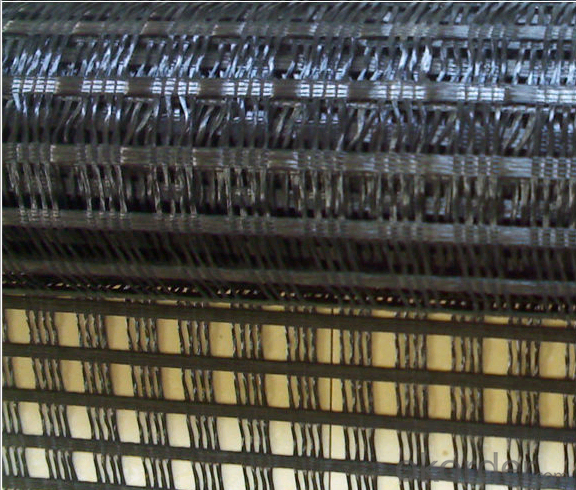
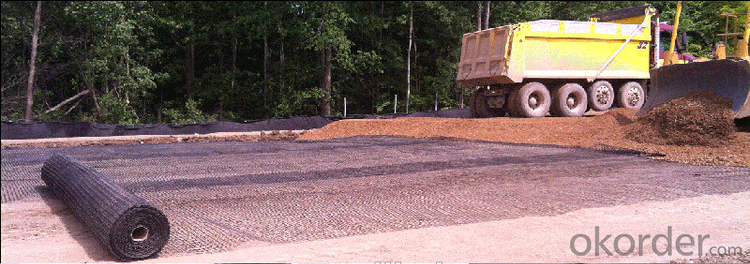
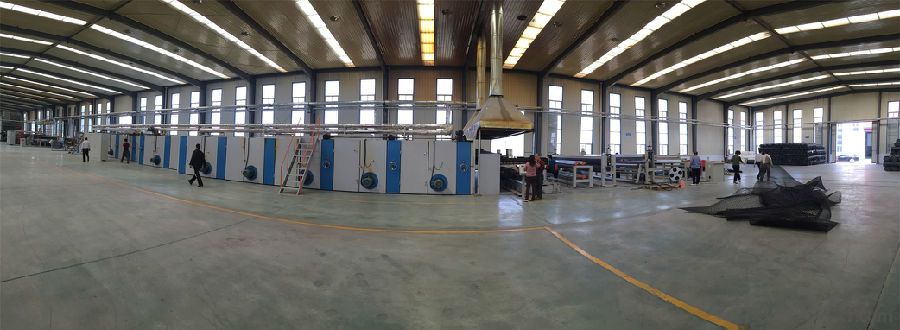
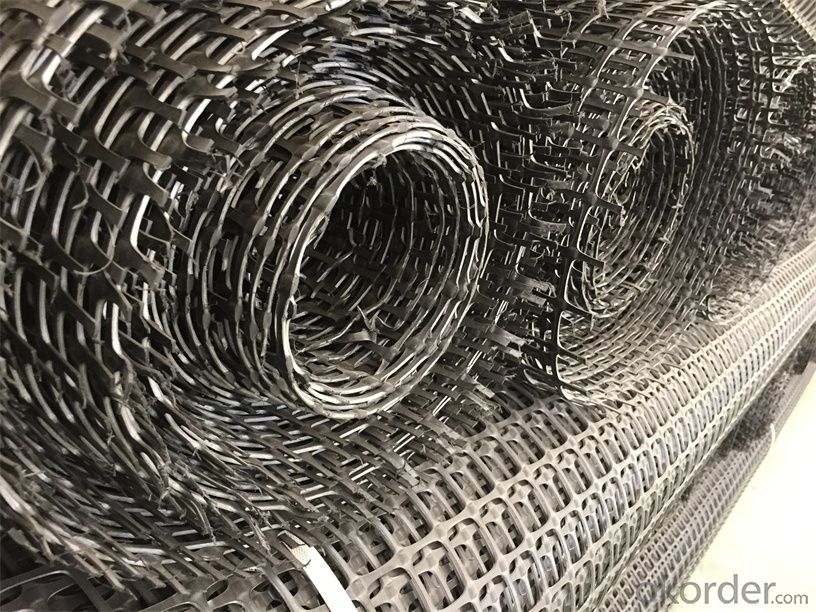
- Q: What are the factors that affect the design of geogrid-reinforced structures?
- There are several factors that affect the design of geogrid-reinforced structures. Some of the key factors include the type and properties of the soil, the magnitude and direction of the applied loads, the desired level of stability and performance, the environmental conditions, and the available construction materials and methods. Additionally, factors such as the cost, aesthetics, and maintenance requirements may also influence the design decisions for geogrid-reinforced structures.
- Q: Can geogrids be used in slope stabilization for railway embankments in permafrost regions?
- Yes, geogrids can be used in slope stabilization for railway embankments in permafrost regions. Geogrids provide reinforcement and stabilization to the soil, reducing the risk of slope failure and ensuring the stability of the embankment. They are particularly effective in permafrost regions where the frozen ground can be prone to thawing and subsidence. Geogrids improve the overall strength of the embankment, minimize soil movement, and help to maintain the integrity of the railway infrastructure in these challenging environments.
- Q: Can geogrids be used in retaining wall facing systems?
- Yes, geogrids can be used in retaining wall facing systems. Geogrids are commonly used to reinforce and stabilize soil in retaining walls, and they can help enhance the overall strength and stability of the wall. They are typically placed within the soil layers behind the facing system to distribute the forces and prevent excessive movement or failure of the retaining wall.
- Q: Are geogrids resistant to alkali degradation?
- Yes, geogrids are generally resistant to alkali degradation. They are designed to withstand harsh environmental conditions, including exposure to alkaline substances, without significant degradation or loss of strength.
- Q: Can geogrids be used in temporary construction applications?
- Yes, geogrids can be used in temporary construction applications. Geogrids are commonly used to reinforce soil and provide stability, making them suitable for temporary structures such as retaining walls, roadways, and excavation support. They can be easily installed and removed as needed, making them an effective solution for temporary construction projects.
- Q: Construction technology of steel plastic grille
- (4) the first layer of geogrid paved, began to fill with second layers of 0.2m in thick sand (coarse), the method of sand transport to the site: car unloading to the subgrade side, then put forward to push the bulldozer, within 2 meters on both sides of the subgrade filling after 0.1M, the first layer of geogrid fold up and then fill in 0.1 meters in the sand (coarse), from both sides to the middle filling and advance, prohibit all machinery without filling (coarse sand) of Geogrid on traffic operation, it can guarantee the geogrid is smooth, does not play drums, do not wrinkle, stay in the second layer (coarse) after the formation of sand, the level of measurement, to prevent uneven filling thickness, leveling and correct use of vibratory roller 25T static pressure two times.(5) as the second layer of geogrid layer construction method with the first method, and finally filling in 0.3m (coarse sand), filling in the same way as the first layer, using 25T hydrostatic roller two times, so subgrade reinforcement is dealt with.
- Q: How do geogrids improve the performance of reinforced soil retaining walls?
- Geogrids improve the performance of reinforced soil retaining walls by adding tensile strength and enhancing stability. They are typically made from high-strength materials such as polyester or polypropylene, which provide reinforcement to the soil mass. When geogrids are incorporated into the retaining wall design, they effectively distribute the applied loads, reducing the stress on the soil and preventing wall failure. Additionally, geogrids increase the overall stiffness of the reinforced soil, minimizing deformation and settlement. This reinforcement technique enables the construction of taller and more structurally sound retaining walls, ensuring long-term stability and improved performance.
- Q: What are the typical applications of geogrids?
- Geogrids are commonly used in a variety of applications, including soil stabilization, reinforcement of retaining walls, slope reinforcement, and erosion control. They are also utilized in road construction, landfills, and mining operations. Geogrids help to improve the strength and stability of soil and other materials, making them an essential component in various civil engineering projects.
- Q: What are the long-term durability characteristics of geogrids?
- Geogrids have excellent long-term durability characteristics. They are typically made from high-strength materials such as polyester or polypropylene, which are resistant to degradation caused by UV exposure, chemical exposure, and biological factors. Geogrids also have high tensile strength, allowing them to withstand heavy loads and maintain their structural integrity over time. Additionally, they have low creep and deformation rates, meaning they can maintain their original shape and performance for an extended period. Overall, geogrids have proven to be highly durable and reliable for various applications in civil engineering and construction.
- Q: What are the different types of geogrids?
- There are several types of geogrids, including uniaxial geogrids, biaxial geogrids, and triaxial geogrids. Uniaxial geogrids have strength in only one direction and are often used for soil reinforcement in walls and embankments. Biaxial geogrids offer strength in two perpendicular directions and are commonly used for stabilizing and reinforcing soil in applications such as road construction and retaining walls. Triaxial geogrids provide strength in all three directions, making them suitable for stabilization and reinforcement in areas with complex soil conditions or heavy loads.
Send your message to us
Rail Track Reinforcement Geogrids - Biaxial Water-Soluble PVC Coated Polyester Geogrid 40*40KN PP Biaxial Plastic Geogrid
- Loading Port:
- Qingdao
- Payment Terms:
- TT OR LC
- Min Order Qty:
- 5000 m²
- Supply Capability:
- 2000000 m²/month
OKorder Service Pledge
OKorder Financial Service
Similar products
Hot products
Hot Searches
Related keywords
